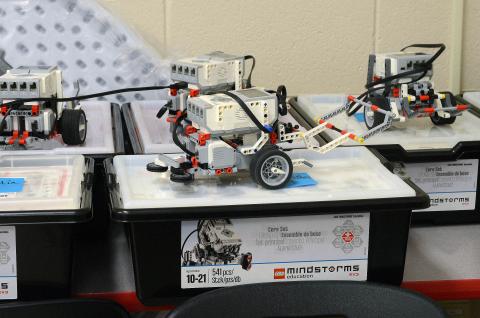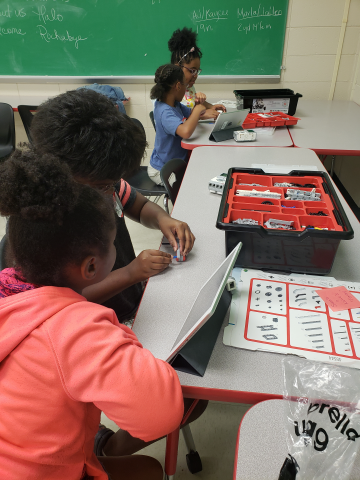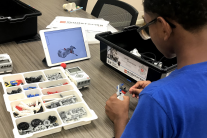The University of Louisiana at Lafayette has taken its place in the top level of the nation’s research institutions
Thinking through the lens of biomimicry
Tue, 07/24/2018 - 9:07amSchool may be out for the summer, but a University of Louisiana at Lafayette summer program is hoping to continue the education of local young minds by engaging them in their own experiential research.
Using a National Science Foundation grant, Dr. Douglas Williams, director of the Center for Innovative Learning and Assessment Technologies, created a curriculum called “Making Inspired by Nature” for pre-service elementary teachers that engages students in a traditional classroom to do more creative pursuits through “design thinking.”
“Design thinking is a process for creative problem solving, so you empathize with those for whom you are designing; you define the problems; you ideate; you might look to nature for solutions,” said Williams, who also teaches educational technology at UL Lafayette. “Then you build prototypes, which is what the students are doing (at the camp). It’s a means for communication but also a way for the them to clarify their thinking about their inventions.”
The students are learning these techniques through biomimicry, which is an approach to problem solving by seeking out sustainable solutions to human challenges using nature's own strategies.

“When we do projects, we think about engineers who create systems, and those systems are made up of parts that work together,” Williams explained. “The natural world has perfected many systems over time, so we are using biometics to engage students and encourage real world problem solving.”
The students, ranging from ages 9 to 14, spent a week learning and applying biomimicry by building and coding robots using the LEGO Mindstorms EV3 robotics set, conversing with various professors, and eventually presenting their own research to the group. Over the summer, approximately 80 local students were engaged in the program.
“I’m hoping that being here, they get an interest in science and also in working as a team to problem solve,” said Claire Crutti, a fifth grade teacher at J. Wallace James Elementary school and lead teacher of the summer program. “It’s just a great opportunity to actually show them, ‘Oh, that thing in nature, I can make that.’”

One student was drawn to the way polar bears can withstand below-freezing temperatures. He took elements of the bear that helps it fight off the frigid air — its clear fur and black skin — and “constructed” a suit with similar features for human wear.
Another student researched the strength of the Japanese Babylon shell to envision a redesign of the bulletproof police vest that could completely prevent bullets from striking through the material.
In addition to engaging students through the lessons, the second part of the program was to introduce and train early education students in innovative pedagogies such as systems thinking, innovation, and sharing work in a showcase.
The university students were initially engaged in two semesters of biomimicry experiences before putting the lessons into practice through the summer program.
“It’s a great opportunity for our pre-service teachers to train in that setting,” said Williams. “Ultimately, we are trying to teach these younger students how to think, problem solve, and how to view the world differently.”
(Photo credit: Project Innovate Camp) Students engage in biomimicry lessons using robotics.

